[Wanderlust Tips June 2019] This Hello world#4 journey had taken our group of 12 people with feelings of excitement to discover lush green Jeju during its sunny summer days. The morning sunlight shone to begin a new day, creeping through the trees, jumping on the grass and glittering with gold off the sea. In such dazzling sunshine, the temperature still remained cool and pleasant with a gentle breeze creating an ambience of tranquillity and relaxation.
[rpi]
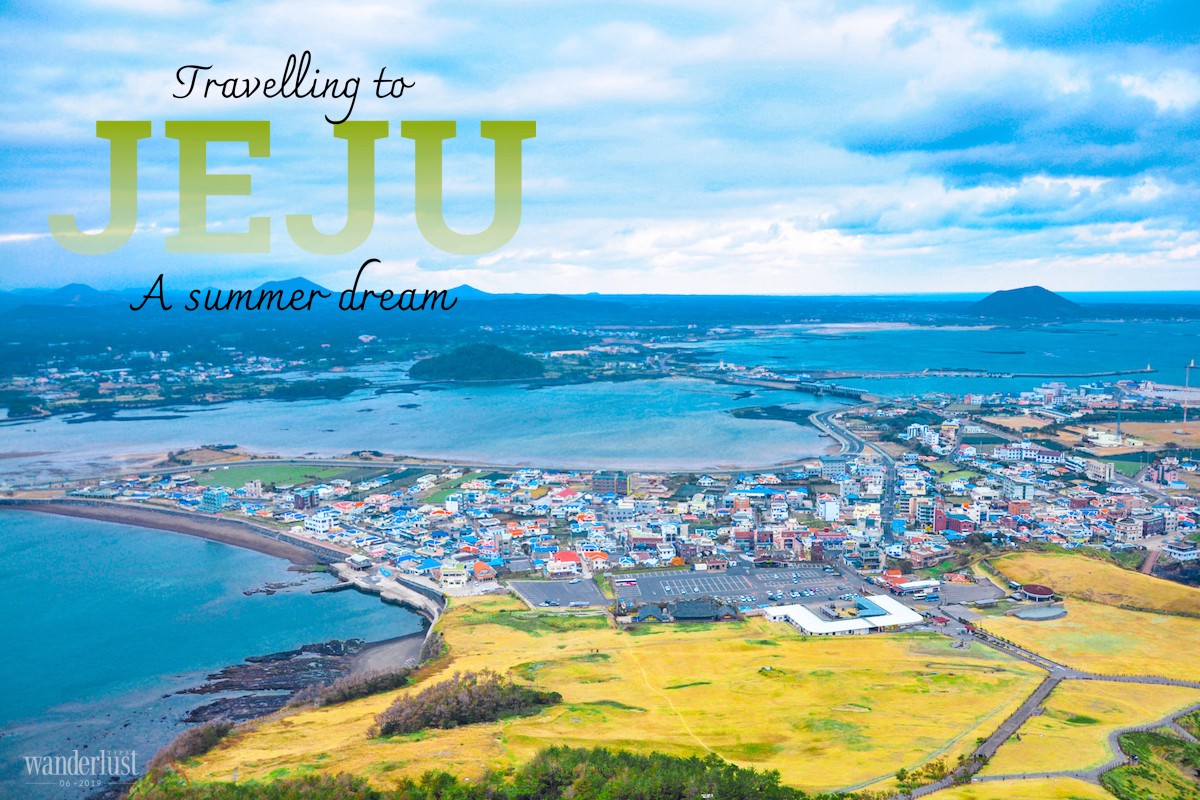
Jeju on a day in mid-May, the sky is cloudless, the sun’s rays are at their most powerful, but the breeze is cool enough for the kids to frolic at the Morning Smile Farm dairy farm without a hat. On Korea’s most beautiful island, the air is so pure that people want to breathe it in forever. Escaping from tiredness temporarily, visitors can rest their heads on the benches, take a look at young couples pushing their strollers, or imagine the black pork sizzling on the grill at the crowded restaurant in the late afternoon.
INTERESTING FACTS ABOUT THE ISLAND THAT STAYS UP LATE
I arrived in Jeju in the late afternoon, it was at the end of spring so the sun was still shining even though it was 8pm. The last sunbeams turned red, piercing the sea surface, creating a sparkling effect.
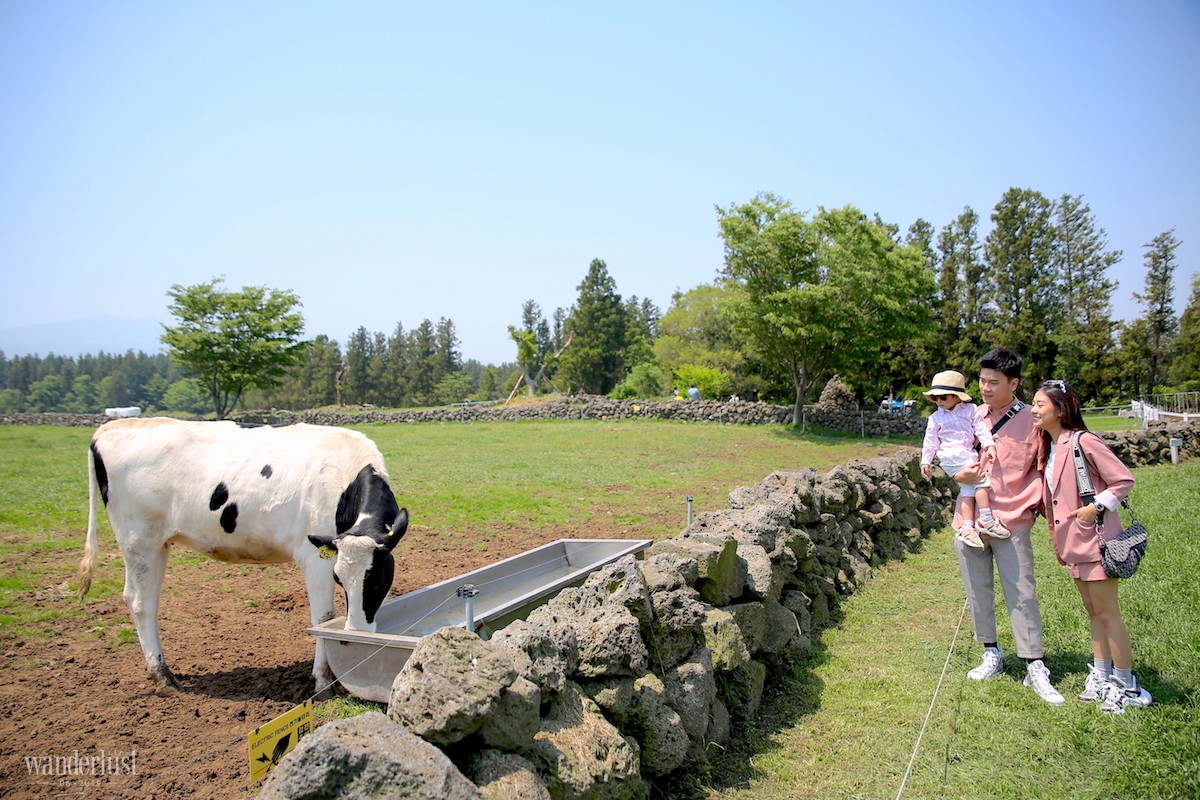
The night on Jeju is cold enough to put on a warm winter coat and sip a few cups of rice wine. I went for a stroll to look around and then retired for a sound sleep at the Maison Glad Hotel that helped me recharge for discovering the island the next day. The Maison GLAD Hotel has blinds covering its large glass windows, so even before the clock said six o’clock, rays of bright sunlight shone on my bed, knocking on the door of the new day. It was going to be a busy day as the kids planned to visit the farms as well as some other attractions.
If Seoul is perfect for you to enjoy fun times with your friends, Jeju is truly a paradise for those seeking peaceful days with their families.
We took a bus from the hotel, crossing many wide tree-lined streets, and stopped in front of a school gate. Not far away, the Morning Smile Farm sits on a hill, which you can get to by walking or in a small car. The farm raises a variety of dairy cows, and from their milk produces dairy products. The name of the farm aptly reflects what it is: “The happy and energetic morning smile.”
The children raced out of their parents’ arms as the lush green scenery appeared in front of their eyes. The boys couldn’t stop staring at the cows, coming close to them and suddenly stepping back in caution. The gentle cows were leisurely eating grass in a massive paddock which stretched as far as the eye can see and were making noises as they pushed their noses through the stone fences to enjoy the delicious food in the children’s plastic buckets.
Located in the world’s biosphere reserve area recognized by UNESCO, Morning Smile Farm bears a striking resemblance to the peaceful beauty of the European countryside. Ms Oc Thanh Van – a guest host and famous actress – who accompanied me on the trip, exclaimed “How amazingly beautiful!” as she looked out at the farm. Ms Thanh Van commented that Coca, her oldest son, had always wished to visit Morning Smile Farm after seeing it on a show about tourist destinations on TV. He was astonished by how much bigger the cows were in reality compared to how they looked on TV, and that the cows here were also beautiful in an Asian style.
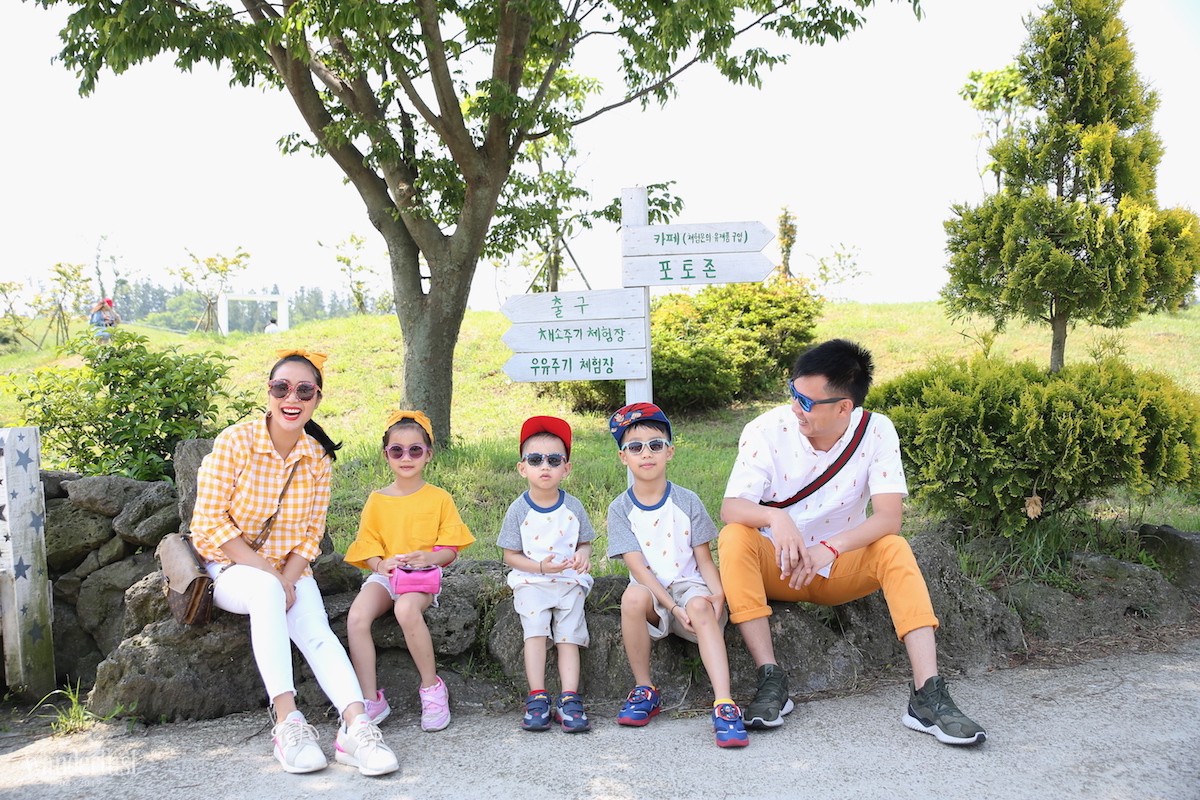
I had a sudden urge to walk along the small roads on the edge of the farm, following the stone fence to the wooden swing that was decorated like an illustration straight out of a fairytale, I couldn’t pass by without snapping some pictures of this gorgeous scene. The wooden square placed randomly on the white sky is a special highlight, also where you should “live virtually” at least once when you come here.
When the children were all worn out and the adults were satisfied they had captured the moment in perfect photos, we went to the mini ice cream factory which is on the farm itself. Each family was given a large stainless steel bowl and the ingredients for making ice cream, including fresh milk, strawberries, honey and cheese. The process was extremely simple, in the bowl, simply mix together all the ingredients put it into an iron basin containing ice and salt, and then continue mixing up until the mixture becomes creamy. I laughed looking at how Oc Thanh Van’s family showed their team-work skills. They were keeping the power to continue mixing while their children were occasionally mischievously playing and making the mixture splatter. Meanwhile, Xoai – the son of Trang Lou and Tung Son ,who also participated in this experience, was excited about scooping up the ice cream in the bowl and savouring it on the spot. After the “hard” morning, he joyfully devoured every last scoop of what he had made himself.
On arriving at Morning Smile Farm, you don’t have to buy an entrance ticket and only pay if you take part in making ice cream or feeding milk and grass to the cows. The price of these experiences is KRW6,000/person (around VND120,000) for making ice cream and KRW2,000-KRW3,000/person (around VND40,000-VND60,000) for feeding the cows. On the spacious lawn, wooden tables and chairs with umbrellas are arranged conveniently for camping. If you prepare some snacks, the farm lunch is just as delicious as any meal at a roadside restaurant. When the children were busy playing games, the adults went to the wooden tables to rest. From here, they could look out at the stunning panoramic views of Hallasan Mountains which was shimmering behind a long row of pine trees. The outdoor temperature at that time was about 28°C, the sun shining so brightly that we had to squint, but not too hot. During my days in Jeju, I had nothing more than a little sun lotion and a small sedge hat, but luckily, my complexion didn’t turn too dark, only slightly dry and this could be overcome by using facial masks – free gifts from marketing promotions in many shopping centres.
After visiting the farm, I had about 1 hour to visit the Jungmun Beach Golf Club before going to an abalone restaurant for lunch. The golf course was built in 1981, and is incredibly luxurious and modern, being so splendid that even a person who doesn’t know how to play golf (like me) finds it breath-taking. Sitting on the golf buggy, driving along all the small paths around the course and closing my eyes, indulging in the taste of the sea breeze was so exciting that I didn’t want to stop.
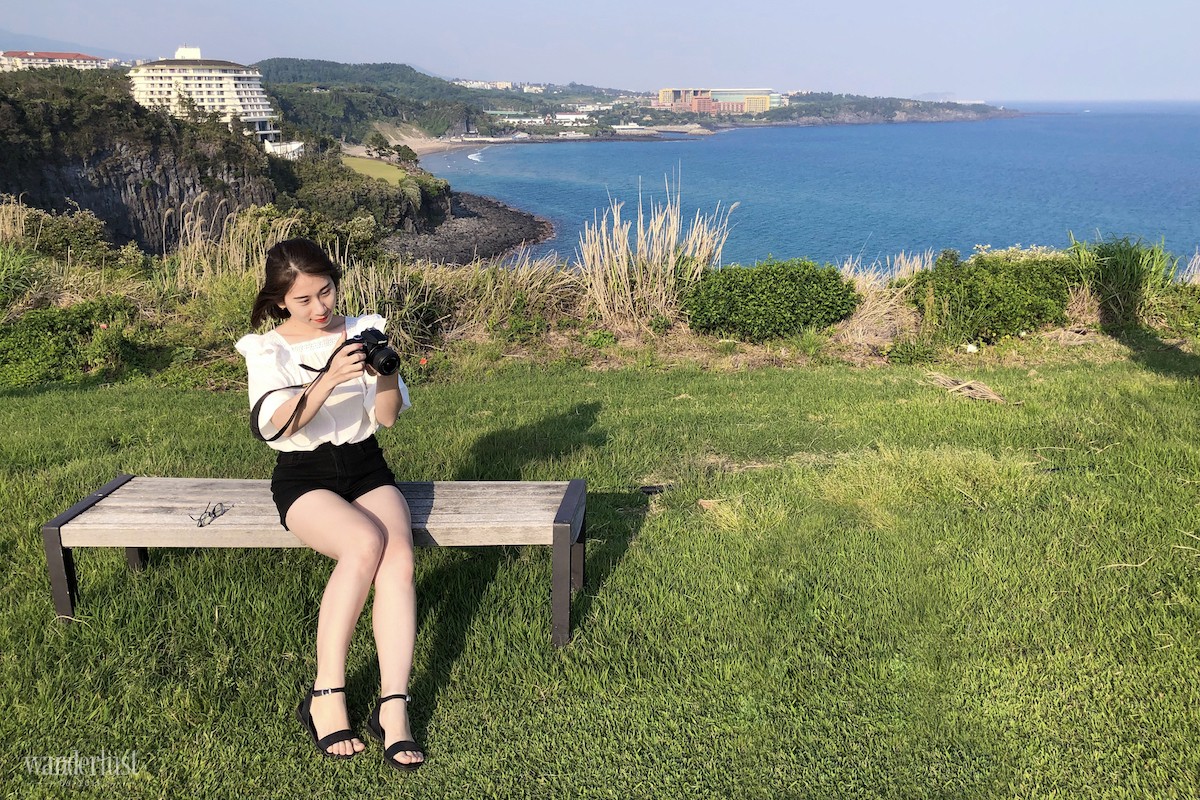
In many locations around the course, visitors can see the turquoise waters and seaside cliffs as well as the eye-catching restaurants staggered on the coast.
The golf course’s director told me that Korean visitors have to book a month in advance to get the best services while for foreign visitors it takes 2 or even 3 months. Not far from the golf course, the hotels located on Jungmun Complex are comfortable and meet the accommodation needs of visitors who want to stay close to the golfing facilities.
CUISINE – HALF OF THE JOURNEY TO EXPLORE JEJU ISLAND
Our group had 12 people, two families and some young people. On the first day after arriving in Jeju, we, the hungry diners after a long day of travel, together enjoyed the famed black pork, described as a “speciality not to be ignored” when coming to the island.
The dining table was close to a glass door, and outside was a twilight scenery with yellow light strips wrapped around the trunks of trees creating a warm look. Whenever the meat being cooked was ready, we took it and wrapped it in sesame leaves, adding kimchi, and dipping in a bowl of soy sauce, we savoured the exquisite taste of the food.
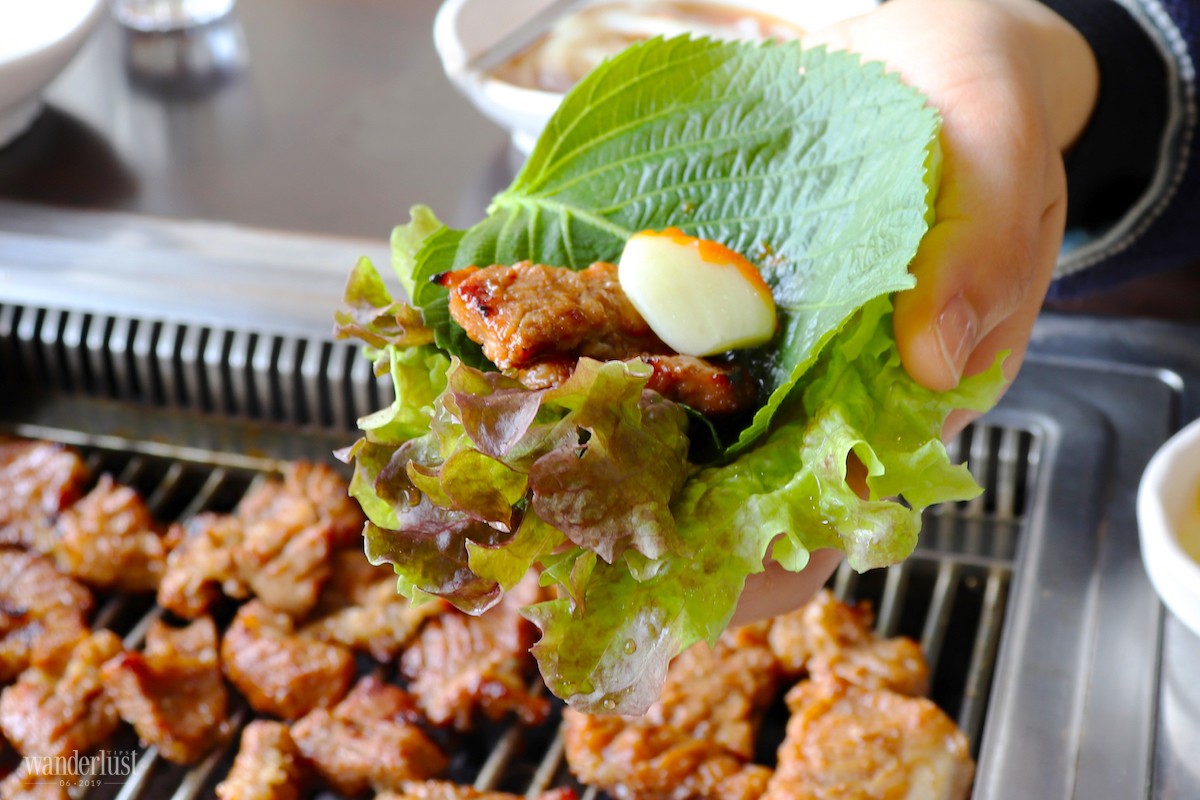
A local person leaned on my shoulder and whispered: Korean families often go out to eat black pork every weekend. It is not cheap because the meat is produced following high-quality standards and undergoes stringent inspections. He said, “Coming to Jeju without eating black pork means that you have only discovered a half of Jeju”. I laughed, made a gesture by putting a piece of meat into my mouth and chewing it to confirm that I had visited Jeju to explore the other half.
For our second meal on the island, we ate abalone. When the chef brought out a full plate of abalone, he said it was a nutritious food that Korean people often eat when they feel sick or want to improve their health. I savoured each piece, pausing for a moment to enjoy the freshness of this exceptional seafood. Along with abalone, of course, kimchi is fundamentally essential, and in Korea, it is deemed impolite if there is no kimchi in the house when guests visit.
When diners do not finish their abalone, the restaurant owner packs the rest into a box, handing it back with a reminder to remember to eat it when they feel hungry. In popular restaurants, most waiters don’t speak English fluently and often use simple Korean sentences or body language to make diners understand. I like the way a waiter observes from a distance, suddenly appearing to ask “Kimchi?”. As soon as our kimchi plate was finished, a server brought another with good wishes. Going to any restaurant in Korea, their staff always bow and smile to me, and despite the language barrier, staff and guests seem to communicate very enthusiastically, almost as though there was no barrier at all.
The children have their own meals of white rice or porridge in small bowls. Most restaurants are equipped with separate chairs so that kids can easily eat meals together with their families. In the evening of the second day, we had a meal at our hotel and enjoyed grilled beef, together with seafood soup, and mushroom soup. Xoai ate a large bowl of rice and soup because he had been so energetically running and jumping about in the meadow during the daytime.
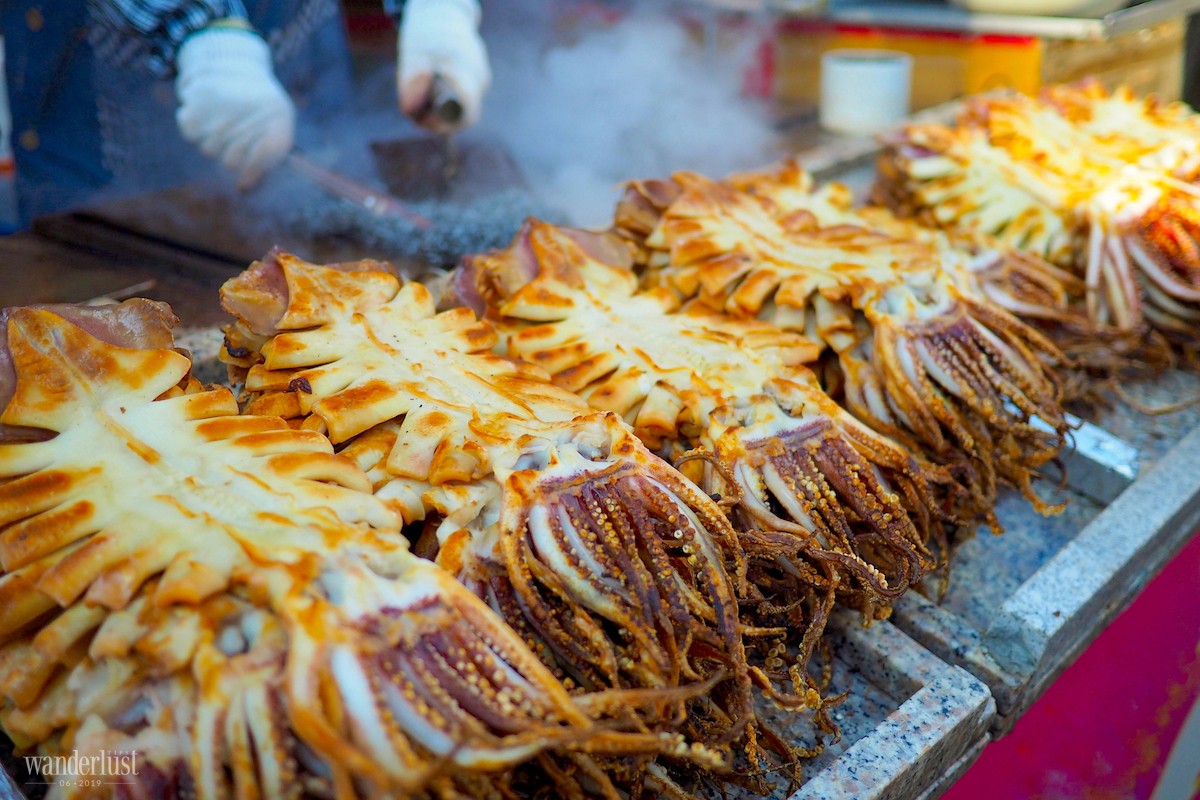
While the two families went back to their rooms at 10pm, we young people hadn’t come to Jeju to sleep. A friend suggested going for a stroll to enjoy our last day on the beautiful island, so I put on my coat and scarf, and then walked down the street in the middle of the night, to my surprise the road was still bustling.
On the street, there was an abundance of restaurants with endless amounts of signs brilliantly designed and decorated. I stayed on the typical Korean steep paths for a while, imagined a couple holding hands returning home after the date. If you love Korean movies, you will probably be like me, captivated by simple scenes such as bus stations, night bars and of course the steep paths that lead to the houses of the Cinderella. The houses on the steep paths are usually not large, built simply, with sliding doors or glass frames that are in line with the affordable housing style of Korean people.
Jeju is even more vibrant at 11 pm. I met many young men in
office clothes going drinking with friends while they were still
carrying bags or wearing backpacks. The road was crowded, but the traffic was calm, and there were no buzzing sounds of laughter or loud car horns.
We went to a small restaurant by the roadside to sip glasses of beer and eat some rustic food. The space was quite small, the tables were designed with just enough room to sit in groups or split into pairs. The honey butter squid with beer made me – a person who isn’t used to drinking, order two glasses. When entering the restaurant, you will be served biscuits to line your stomach with instead of peanuts or prawns like in Vietnam.
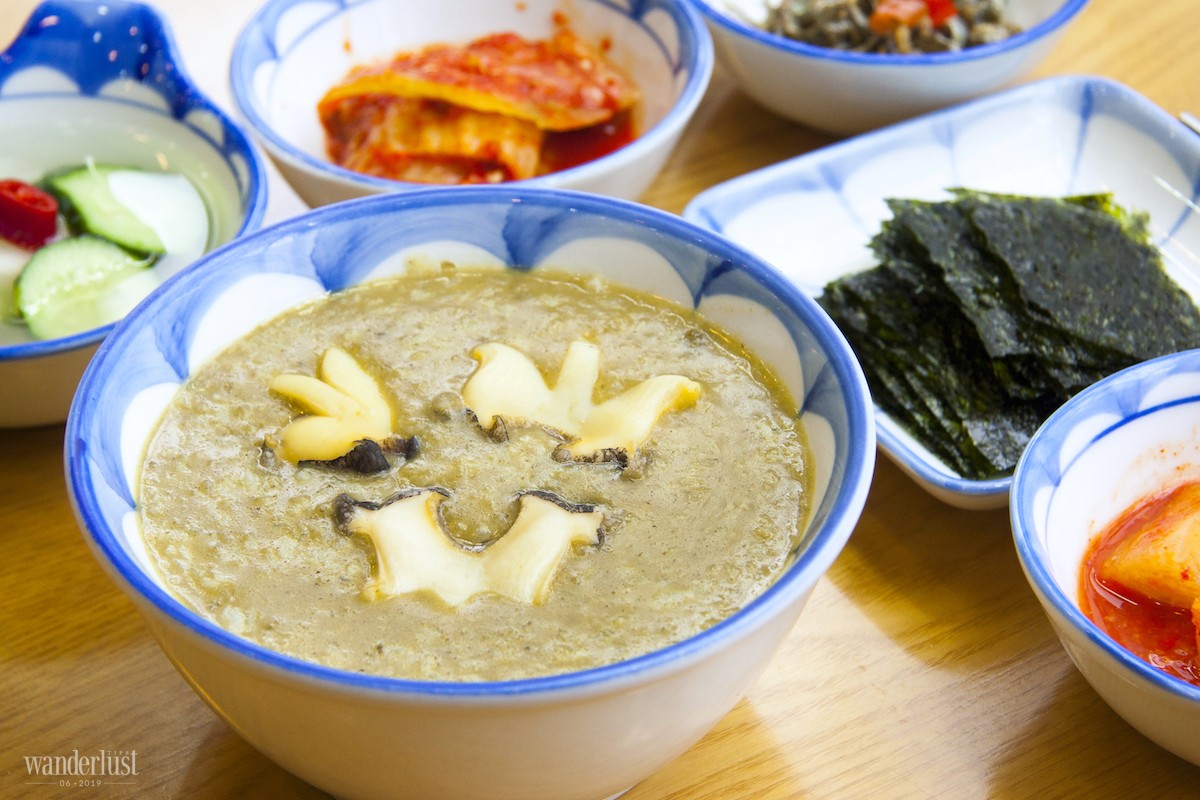
The children got up early the next morning and were ready to say goodbye to Jeju before flying back to Seoul to continue their journey to discover Korea. We had lunch at a restaurant facing the sea, where yachts were lined up and it had a landscape equal to that of any renowned tourist destination. Xoai also wanted to go to the cow farm again; he constantly mentioned this to his parents. I wish I could have a few more days here, just wandering around the hotel or meditating in a quiet place would be enough to satisfy the lush green dreams of summer.
W.TIPS
VISA
In Jeju, visas are lifted for all nationals from 174 countries around the world, including Vietnam. The condition for visa exemption is that tourists must take a direct flight to Jeju Island.
GENERAL INFORMATION
Jeju is the largest island in Korea with an area of 1,846sq. m. With a mild oceanic climate, the temperature in the hottest months reaches no more than 33̊C. Jeju has been voted as an ideal destination for honeymooning young couples or for families to stay in resorts. The island features about 20 golf courses and various types of high-end hotels that are best suited for resort-oriented tourism as well as rest and recuperation.
BEST TIME TO TRAVEL
Jeju has a mild climate, so its year-round temperatures are fairly stable with two distinct seasons of summer and winter: summer (from June to September) is in the temperature range of 20-28oC and winter (from December to March) has temperatures of 3-10oC. Depending on what you prefer, you can visit here at any time of year.
TRANSPORTATION
From Vietnam, you need to transit in Kuala Lumpur in Malaysia or Bangkok in Thailand to Jeju Island. Therefore, you will be exempted from visa when entering Jeju.
MONEY
> The Korean currency is the Won, denoted by KRW and KRW1,000 = VND20,000. You can exchange money at banks if you have your visa and air ticket with you. Exchanging through the black market is quicker, yet rates are worse.
> For your unspent Won, you can exchange it when returning home; however, you should avoid keeping coins (except for to keep as a souvenir) as because of their small denomination, some stores refuse to exchange them.
Hong Nhung | Wanderlust Tips

